Fish and chips, strawberries and cream, bread and butter. These are pairings so common that you almost can’t think of one without the other. Branding and law? Not so much! Indeed the law is not the first thing that springs to mind when you think about positively building a brand or supporting your marketing activities.
design thinking.
However, at Lawbox we think differently, as legal designers we understand the importance of a strong brand and how, when done the right way, your legal communications can support branding and marketing.
Still not convinced? In this blog, we are going to explain why branding and law should go together like peas and carrots. Stick with us! (Spoiler: it involves legal design)
legal documentation to reinforce branding.
We’re guessing that your first thought is whhhhaaatt?? How can law support branding? Why is the way legal documentation looks even important for a brand? Let’s consider the fundamentals of branding…
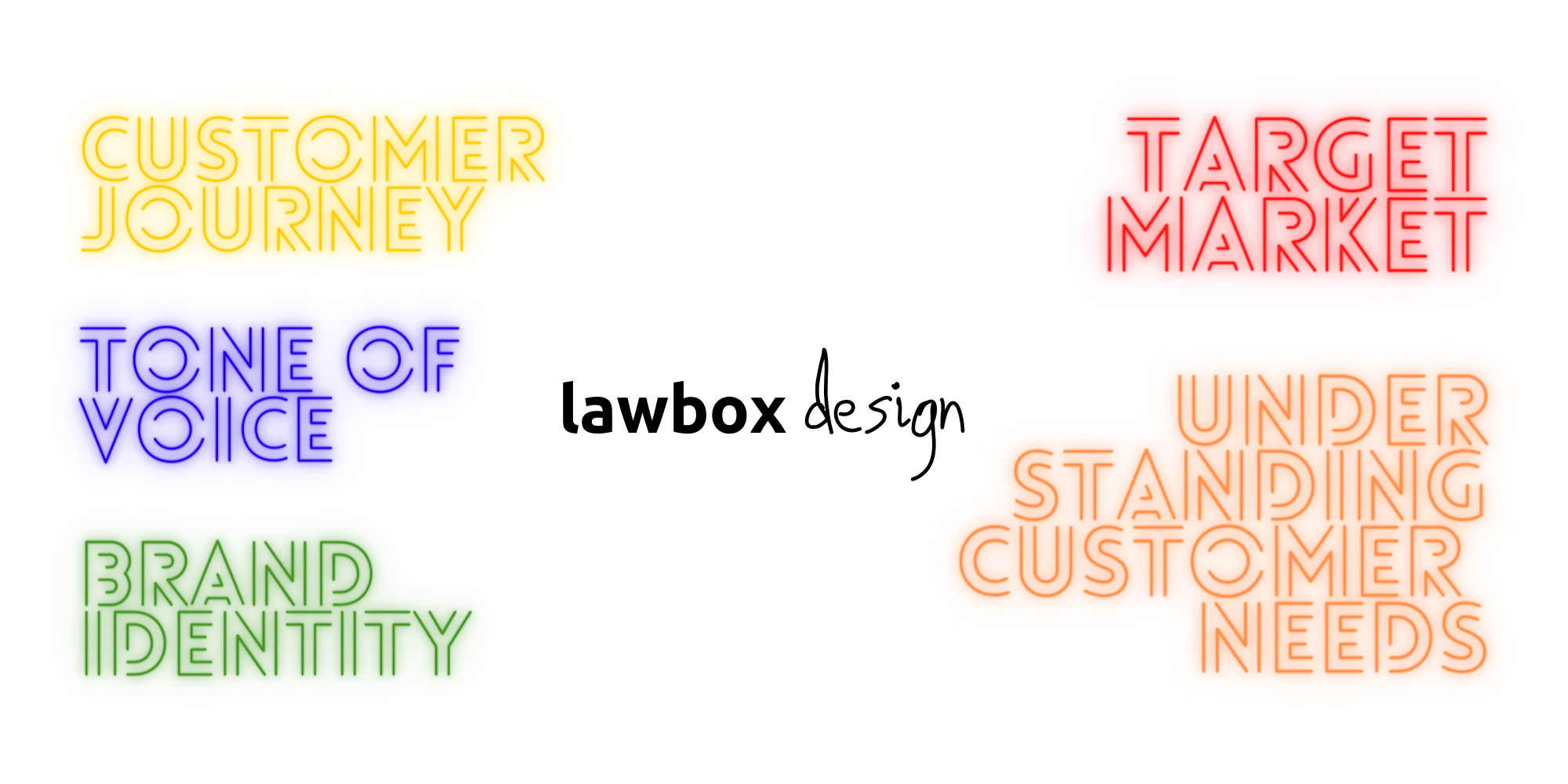
Customer journey, tone of voice, brand identity, target marketing, and understanding customer needs are all key to a successful branding strategy. ALL of these branding elements can be enhanced (or detracted from) by your legal documentation.
customer journey.
First, let’s consider the customer journey. A customer journey is about the sum of all of the experiences a customer has with you. It is about the various touchpoints they have.
Brands will spend a lot of time getting this right. Whether it is the five-star hotel that makes sure there are some personal touches when guests arrive in their room; the online retailer helping you remember what you purchased last time; or the creative agency that turns up with some funky biscuits to the first meeting, small memorable moments add up.
Organisations go out of their way to make sure they are the place customers go to for their service or product. Then they send the legal documentation like these terms and conditions:
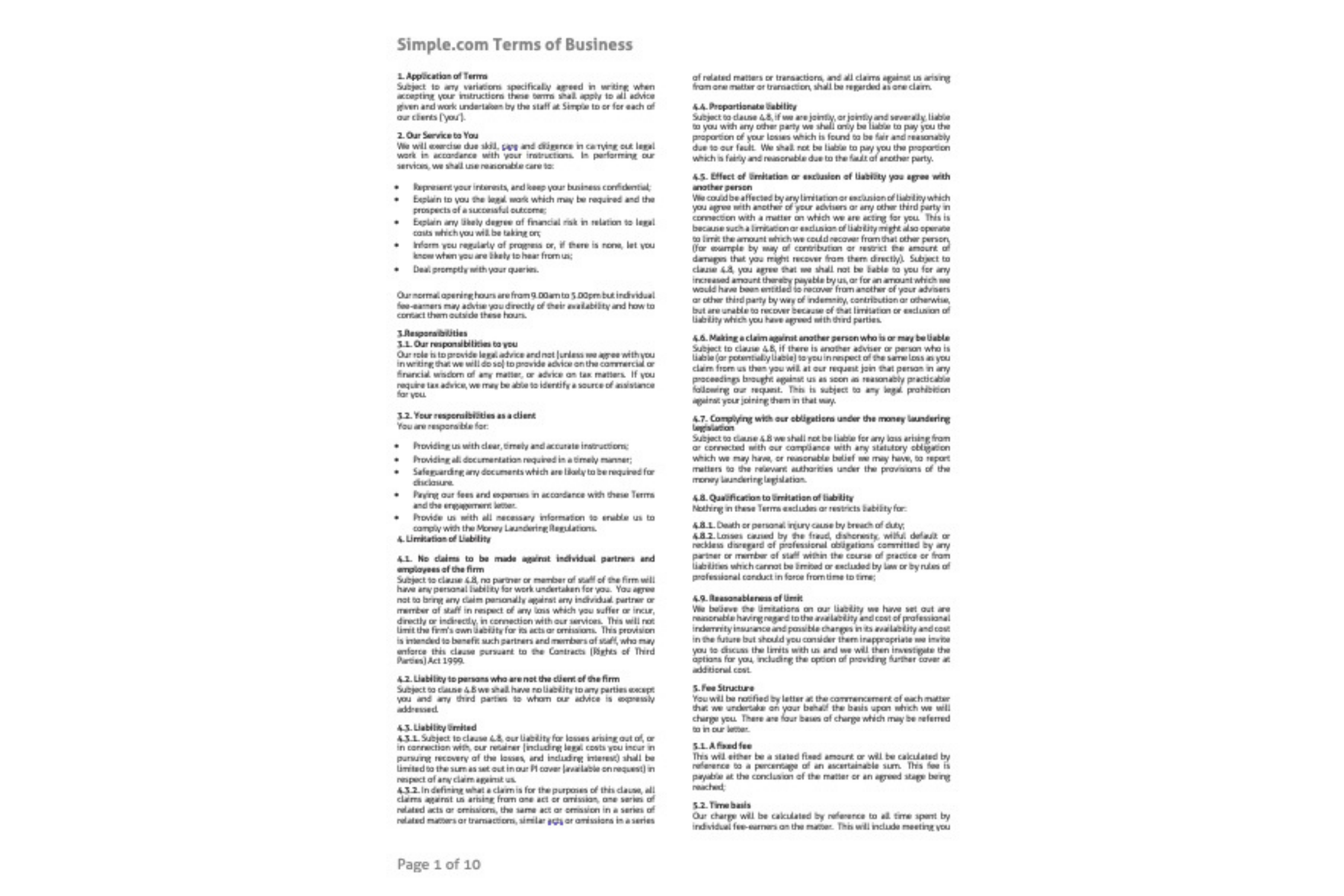
Or, they spend months creating a digital brand that showcases their product(s) and values but then point them in the direction of a digital privacy notice that looks like this:
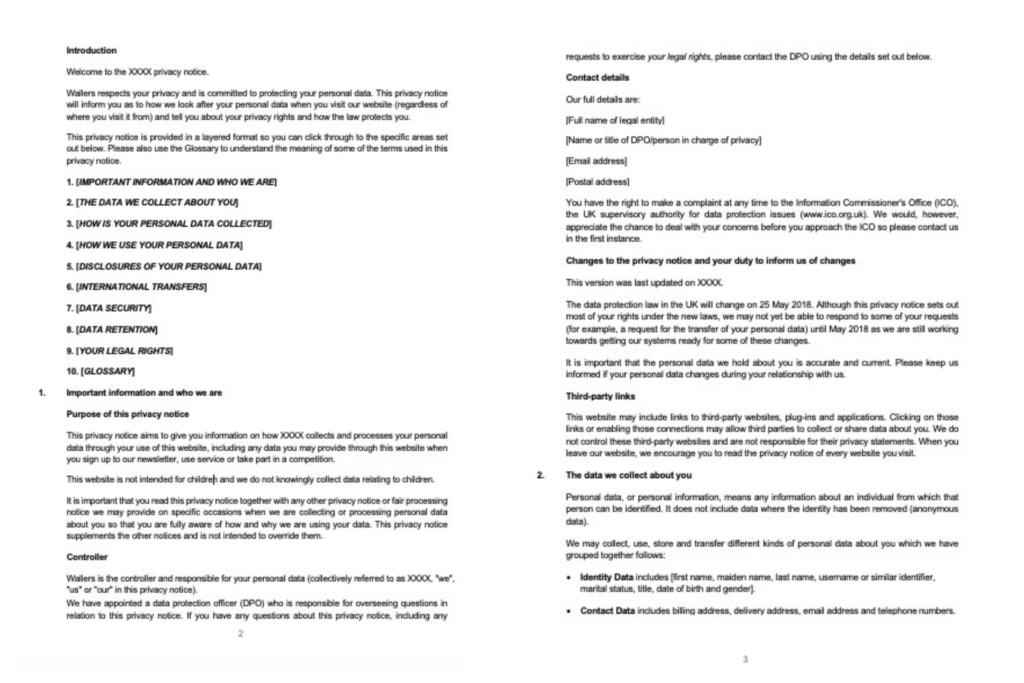
Imagine the difference if what a customer saw instead was these terms and conditions:
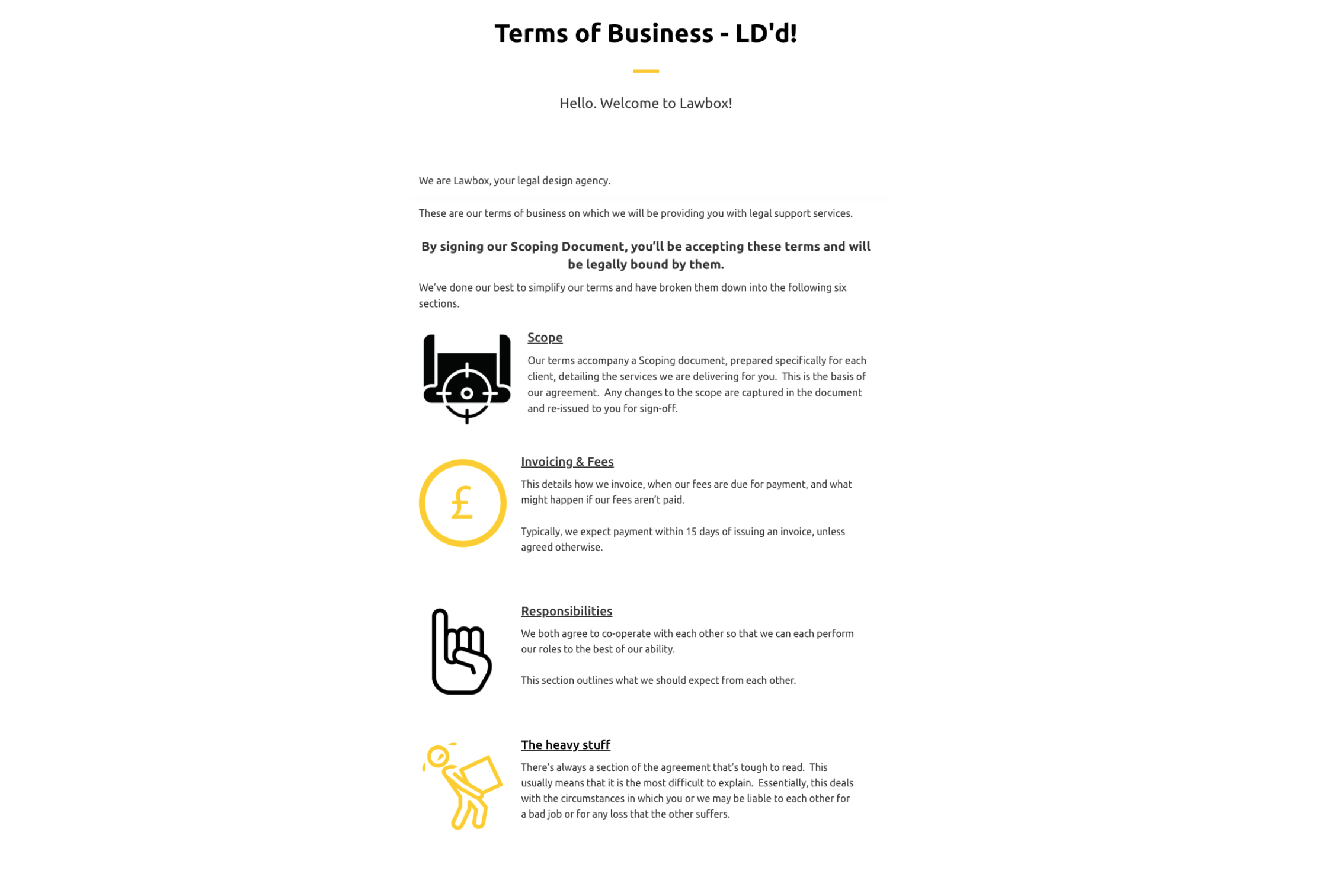
Or this privacy notice:
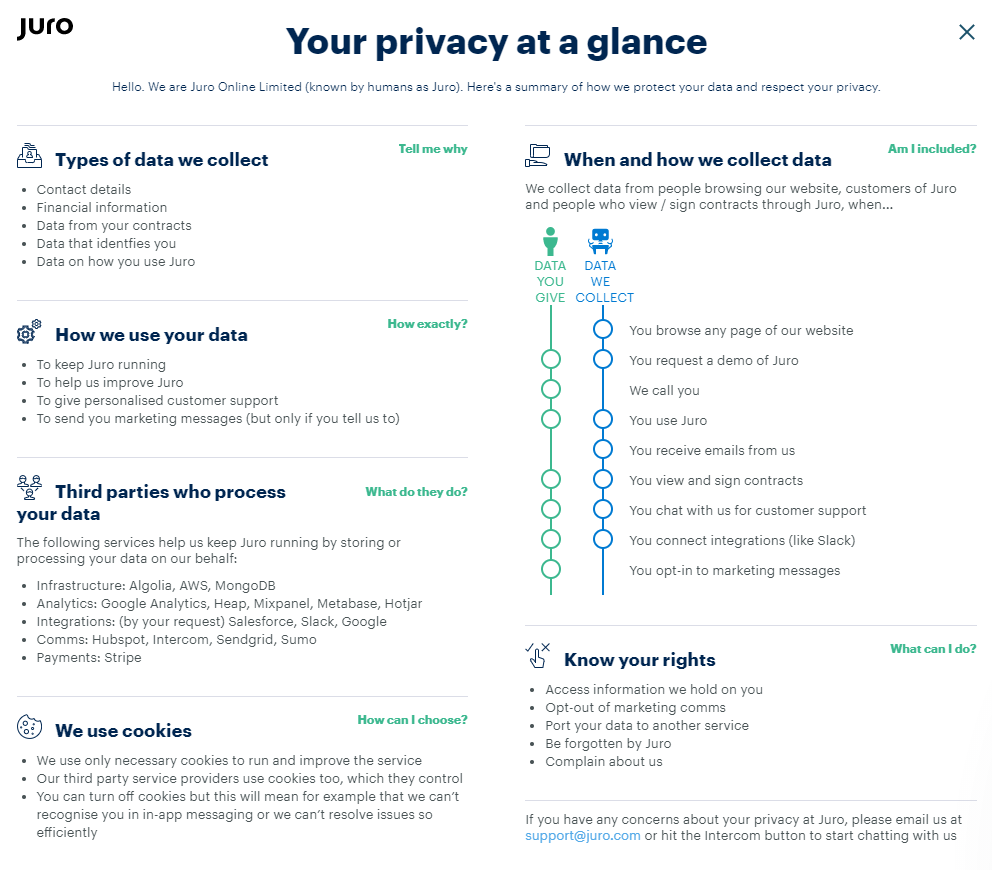
The difference a contract can make to the customer journey should not be undervalued! Imagine how you’d feel if you got the first lot of terms and conditions or privacy notice. Would you be overwhelmed by legalese? Unmotivated? Bored?
How about if you got the second lot of legal documentation? Would you be intrigued? Taken aback? Delighted?
tone of voice.
Creative agencies, marketeers, and branding teams spend a long time thinking about tone of voice. This is particularly relevant for those creating digital content who will be thinking about how to write copy that both hits SEO, but also shows off the company in a way that is “on brand” and enticing.
Your branding agency or marketing head has undoubtedly considered tone of voice on marketing materials that have enticed customers in but then maybe your customer receives a contract that includes clauses such as:
The company shall fail to make, on or before the due date, in the manner required, any payment of principal, interest or any other sums due under this Agreement.
OR
We will bill you monthly in advance of our Services and payment of such fees will be due within thirty (30) days of the date of each of our invoices. All payments will be made in pounds sterling in accordance with the invoice. Late payments hereunder will accrue interest at a rate of two percent (2%) per month, or the highest rate allowed by applicable law. If in our own judgment, we determine that you are not creditworthy or are otherwise not financially secure, we may, upon written notice to you, modify the payment terms to require full payment before the provision of further services or require further assurances to secure your payment obligations hereunder.
Ughh. Okay, so it’s lawyers being lawyers. But it is being sent to actual real life customers. And you sent it!
How about the clauses said:
We will invoice you on completion of your project.
OR
We will ask you to pay all your invoices by no later than 30 days after the date of the invoice. We’re afraid that if payment is late, we’ll charge you interest (at 2% per month above the Central Bank base rate) from the date that payment is due until payment has been made.
Or, if you’re feeling particularly creative:
Invoicing
We’ll invoice you on completion of the Work.
You’ll have 21 days from the invoice date to pay. Remember, late payment is a breach of this agreement so let’s not send our respective accounts teams into overdrive, shall we?
All of these clauses achieve the same end: to inform the customer of their legal obligations. The difference is that the second three options are clauses someone might actually read.
brand identity.
Time for a game. Who would like to play “guess who”? We thought so!
OK….who’s contract is this?
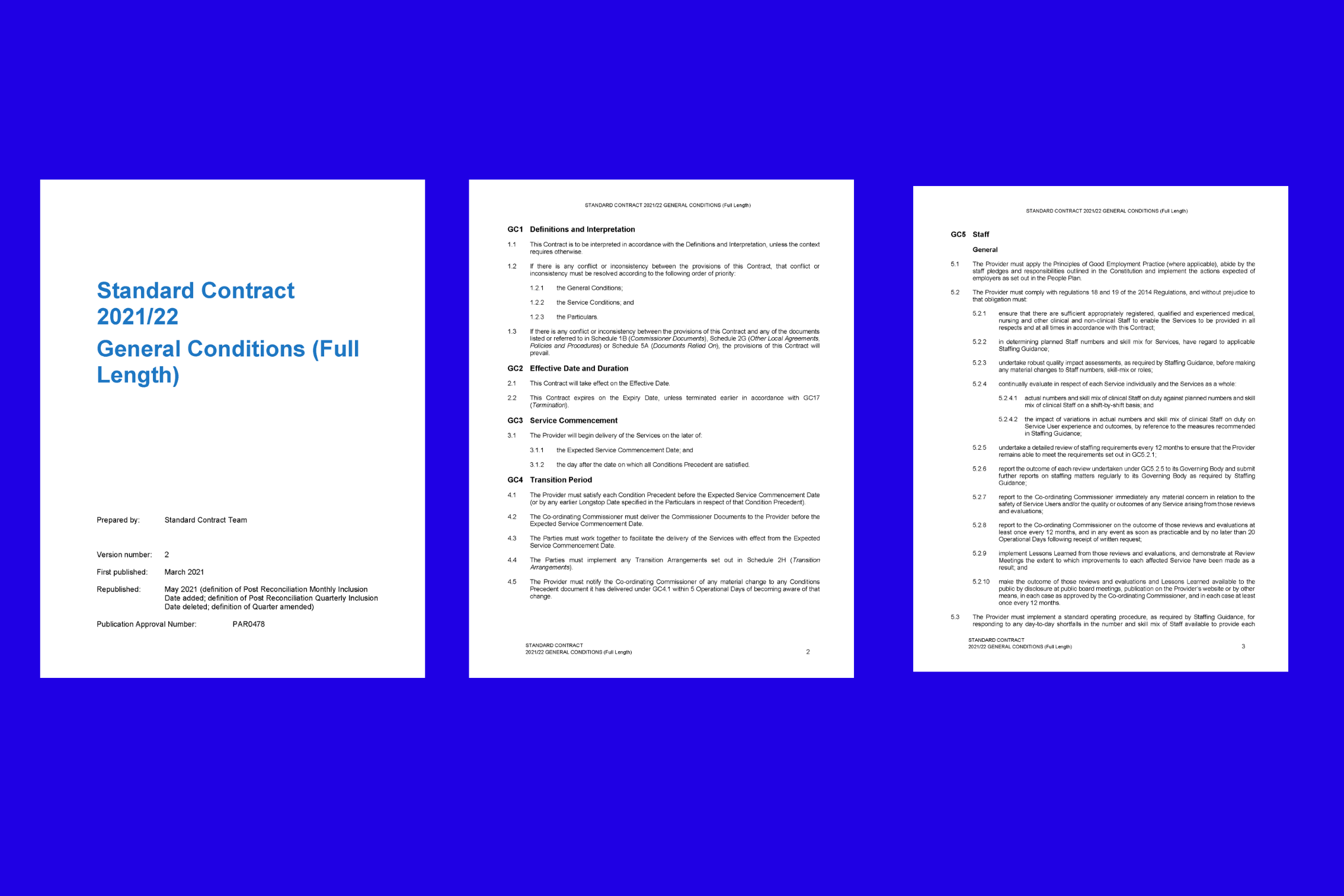
No idea? Nope, we don’t know either.
How about this?
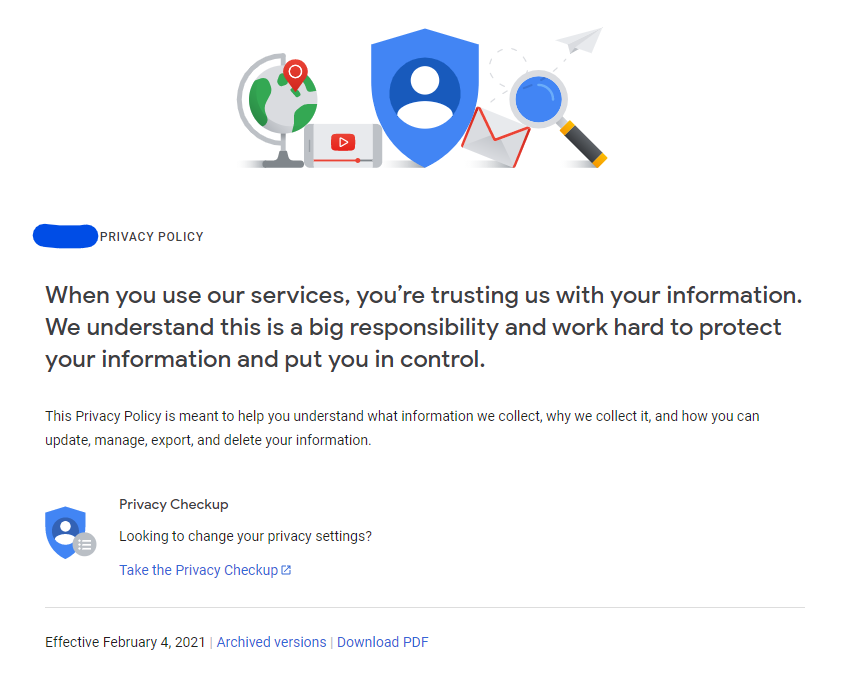
Any ideas? Pretty sure that this branding is universally recognised as….yes, Google. How do you know? Because the colours and the imagery are so synonymous with their brand, it flows through every element of their documentation.
We get it, all so often we ignore our legal documentation. It does the job (sort of) even though it’s boring (very). But imagine a world where these documents could come out of hiding and be something you were proud to call your own? Where legal documentation serves to build your brand, not undermine it? There are an increasing number of brands that are thinking in this way.
target market and understanding customer need.
We are going to tackle these things together. Hopefully, we have by now convinced you that legal design creates beautiful-looking legal documents that are on brand and legible for your average customer, without the need for a dictionary or legal assistance.
What sits behind legal design is even more magical though – design thinking.
legal design delivering design-led legal documentation.
Design thinking requires a shift in mindset and it is what produces different results to those bad examples of legal documentation that we’ve already looked at. It is also what marketing agencies and branding teams will delight in the most.
Lawyers who practice legal design drill down to the heart of what the documents are trying to achieve. They empathise with the people who have to use the documents – your target market – but they also think about all your other stakeholders. This is what makes all of the above work. It is why branding and law are natural bedfellows. They do say opposites attract!
So branding and law – peas and carrots – we will leave it to you to decide which is which in this duo, but we have hopefully convinced you that they go together!
If you have worked hard to create a strong brand which you believe in and are fed up with the legals letting the side down, get in touch, we might just be what you have been waiting for.